From Reef Ball
Foundation, Inc.Sunday, February 15, 2004
Maiden Island, Antigua
Mangrove
Habitat Restoration Project
Stanford Development Group is working with
The Reef Ball Foundation and Nova Southeastern University in
Ft. Lauderdale, Florida to create a large mangrove ecosystem
on Maiden Island, Antigua. Red Mangroves will be imported from
Florida and strategically planted around Maiden Island
to
enhance the marine ecosystem and complement the Reef
Ball coral reef. This project is the world's largest total
marine ecosystem restoration that includes joint coral reef
and mangrove habitat restoration. Since coral reefs and
mangrove habitats interact significantly from a biological
perspective, the
combination of these restoration
techniques will yield a greater environmental benefit than
either project done alone.
Red Mangrove or 'Walking
Mangrove'
(Rhizophora
mangle)
was
chosen for use on the island because it provides the best
marine habitat for juvenile fish and marine life. The
roots of the Red Mangrove look like legs walking into the
water which is why it is sometimes call the 'Walking
Mangrove.' Red Mangroves are commonly
grown
by nurseries and their habitat value is well documented
and appreciated by environmentalists. To stabilize the
seedlings (propagules)
in the open ocean, the most
common
method is to use split PVC pipes driven into the ocean
floor. Because the bottom composition varies greatly on
Maiden Island, a variety of new methods
are being used to
stabilize seedlings including using prefabricated concrete
Reef Balls as underwater "pots." The mangroves will be
planted in areas that benefit aquatic life and in areas where
they can provide a natural barrier to
erosion.
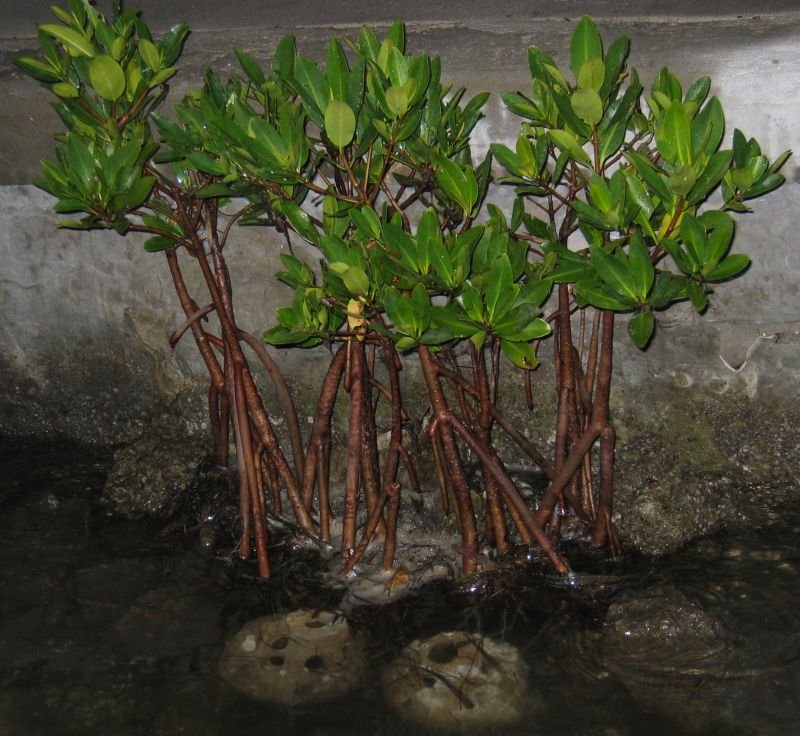
2 year old Red Mangroves raised from seed and planted
along a seawall in Manatee County, Florida by the Reef Ball
Foundation. On Maiden Island, 2 year old
plants
rather than seedlings will be installed so that the
restoration process is significantly faster.
Over 7,000 Red Mangroves are being
imported into Antigua from Nova Southeastern University's mangrove
nursery
in Ft. Lauderdale, Florida. The Nova Southeastern component of
the project is headed by Dr. Richard E. Dodge who is also in
charge of the National
Coral Reef
Institute.
Many recent scientific papers have been published about the
interaction
and larval
dispersion amongst Mangrove and Coral Reef
ecosystems.
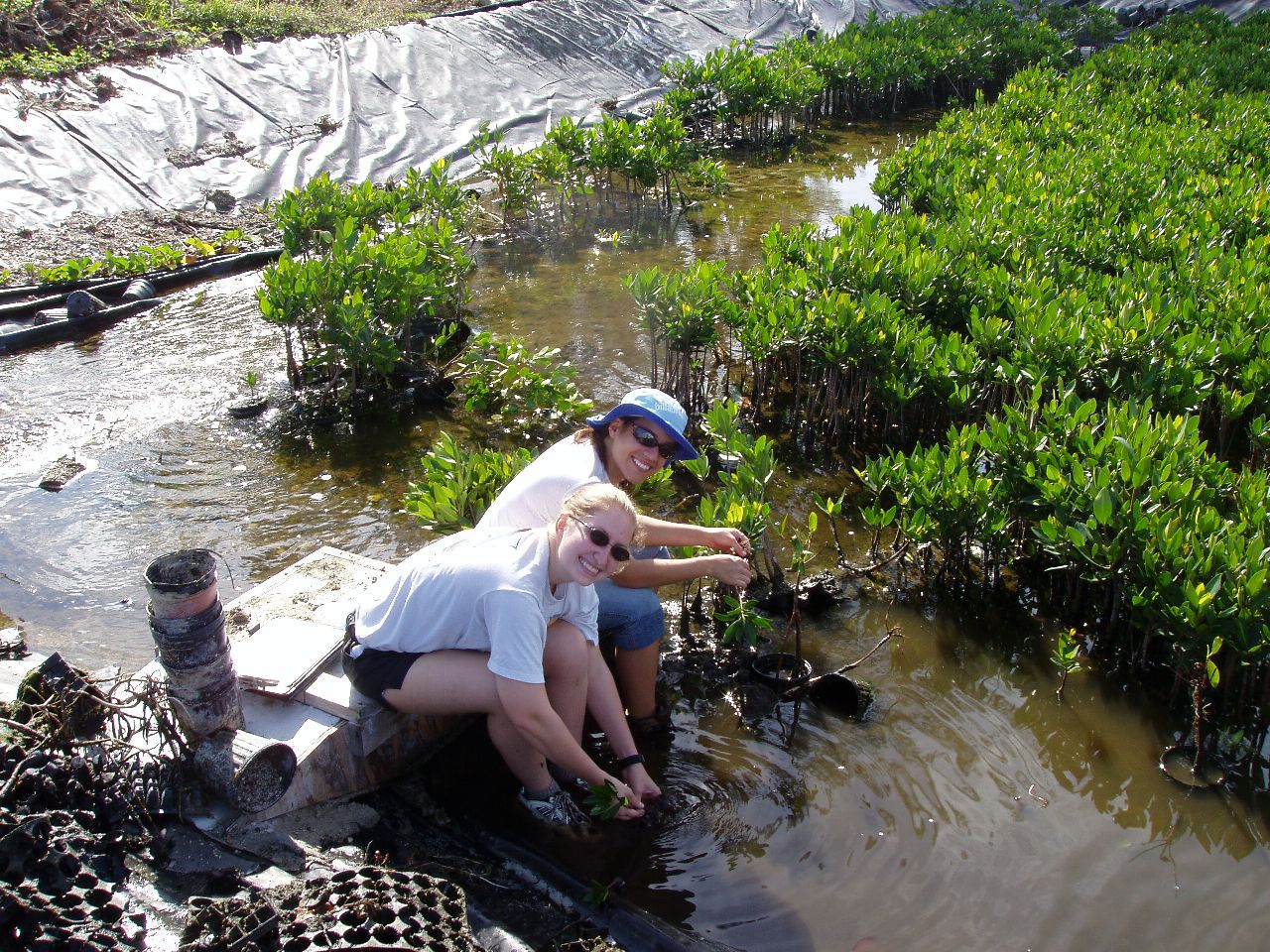
Nova Southeastern Students and
Staff are removing Red Mangroves from their nursery in Ft.
Lauderdale to be shipped to
Antigua.
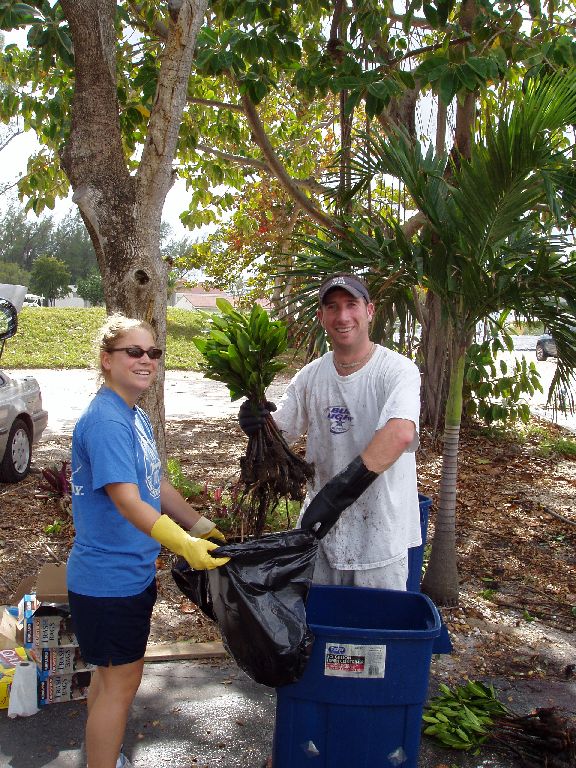 The
The
importing process includes treating the Red
Mangroves with both a fungicide and insecticide at Nova
Southeastern University and then shipping the in special
climate
controlled containers. Upon arrival in
Antigua, they are inspected by customs and agricultural
officials and when released they are placed in a
special
nursery area set up on Maiden Island by Stanford Development
and the Reef Ball Foundation. After a grow out and
acclimation period, they are
transplanted to planned areas
around Maiden Island. Over time, these mangroves will
develop into a vast mangrove ecosystem for Antigua and
will
function together with the Reef Ball coral reefs to
complete the marine ecosystem restoration on Maiden
Island.
Above, Nova Southeastern Staff
and Reef Ball Foundation supervisors dip the Red Mangroves
into the solutions used to insure
the plants do not carry
harmful insects or fungus to Antigua. After dipping, they are
bagged into sealed plastic bags for
shipping.
The newly created mangrove habitat
and will enrich the life on the reefs with an
abundant
supply of fish, lobster, and a great variety of marine life.
As an added bonus, the mangroves will serve as natural filters
to maintain excellent
water quality for the reefs near
Maiden Island. Stanford Development Company's attention
to the complete ecosystem, rather than just
individual
components, has been one of the keys to the
great success of the overall Maiden Island
project.
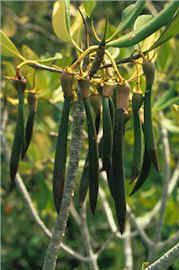
Propagules of Red
Mangrove. When ripe, these young seedlings detach from
the parent tree and float in the estuary until
a suitable
substratum is contacted. Photo courtesy of C. Feller,
Smithsonian Environmental Research Center.
Mangrove Flower

New Propagule forming.
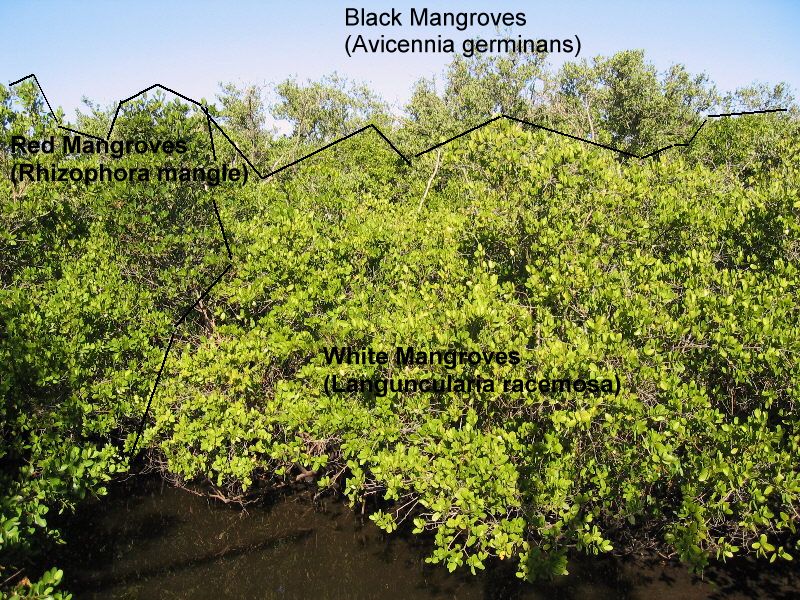
There are 3 types of mangroves (not counting Buttonwood)
that can be grown in Antigua...Black, White and Red. Red
is normally in the water or at the
water's edge, next, at
waters edge or on land, is the White Mangrove and the furthest
back are usually the Black Mangroves. Whites may be
planted on shore at Maiden
island and will have value for
erosion control but little fishery value except for their
ability filter rain run-off. Blacks are slow growing and
very
difficult to plant as they are susceptible to fungus
and other diseases and therefore will probably not be used on
Maiden Island.
<<=BACK
TO THE MAIN
PRESS RELEASE
All photos on this page are available in High Resolution
Digital Format (4
mega-pixel resolution) and can be
obtained by contacting reefball@reefball.com.
There
are many other photos to choose from, by going to http://www.reefball.com/map/antigua.htm
you
can see more pictures from this project. You may freely
copy and use
this press release as long as it remains
unchanged. If you wish to write
your own version, we
would be happy to set up interviews, provide digital
photos
or even arrange a site visit. Use of photos
requires acknowledgement that
the source is http://www.reefball.org/.
<Back to
World Map
(use browser back for one level back)
Copyright
1995 - 2003, RBDG,
Ltd. all rights
reserved. See brochure
page
footer for information on patents, copyrights, trademarks and
service marks
referenced, but not indicated, on this page.
Other pages we maintain: Reef
Ball Shared
Resources, Reef
Ball
Foundation, La
falda
Chairman
Reef Ball Foundation, Inc.
6916 22nd
Street West
Bradenton, FL 34207
reefball@reefball.comWeb site:
http://www.artificialreefs.org/
